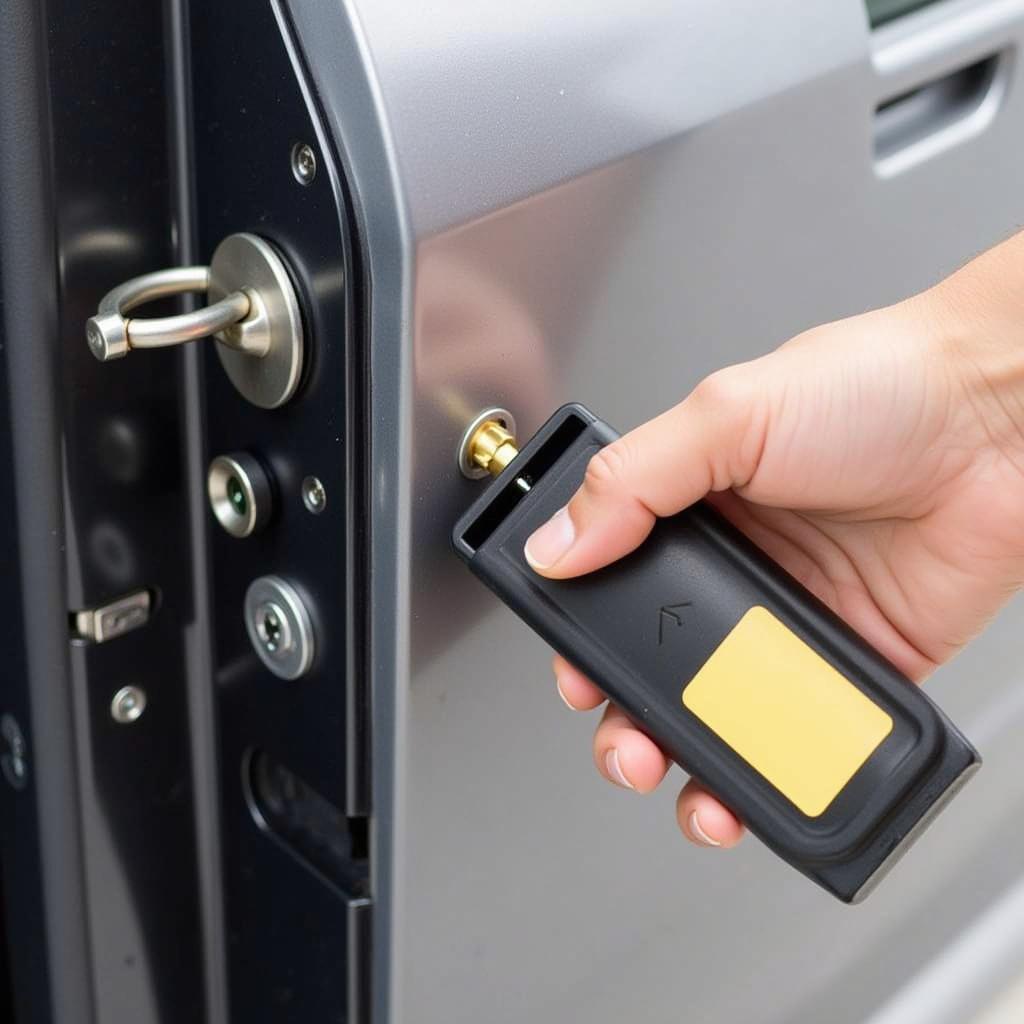Frozen car locks are a common winter woe, leaving you stranded and frustrated. But don’t worry, thawing them out is often easier than you think. This guide will provide effective solutions to get you back on the road quickly and safely, whether you’re a car owner, a mechanic, or an automotive technician.
Understanding Why Car Locks Freeze
Before diving into solutions, let’s understand the problem. Moisture can get inside the lock mechanism. When temperatures drop below freezing, this moisture turns to ice, effectively jamming the lock cylinder. This can also freeze your key inside the lock!
You can find more helpful tips on dealing with frozen car parts at frozen car locks fix.
Quick Fixes for Frozen Car Locks
Using De-Icer
Commercial de-icers are specifically designed for this purpose. Spray the de-icer directly into the keyhole, allowing it to work its magic. Often, this is the quickest and easiest solution. Remember to follow the manufacturer’s instructions. Sometimes, you might need to repeat the process a few times.
Heating Your Car Key
Carefully heat your car key with a lighter or match. Avoid getting the key too hot, as this could damage the plastic components. Insert the warmed key into the lock and hold it there for a few seconds. The heat will help melt the ice. Be cautious not to burn yourself!
What if your car door won’t latch? Check out this guide: how to fix a car door that won’t latch.
Preventing Frozen Car Locks
Prevention is always better than cure. Here are some steps to protect your car locks from freezing:
- Cover your car: A car cover will protect your car from the elements, including snow and ice.
- Park in a garage: If possible, park your car in a garage to shield it from freezing temperatures.
- Use a lubricant: Apply a silicone-based lubricant to the lock mechanism before winter sets in. This will help repel moisture and prevent freezing.
If you are struggling with a car door that won’t open from the inside, you might find this helpful: car door wont open from inside how much to fix.
What to Avoid When Dealing With Frozen Car Locks
- Hot water: While tempting, pouring hot water on a frozen lock can damage the lock mechanism and even crack the window glass due to the rapid temperature change.
- Excessive force: Forcing your key into a frozen lock can break the key or damage the lock.
- Using WD-40: WD-40 is not a lubricant and can attract more moisture, potentially worsening the problem in the long run.
 Applying lubricant to a car door lock to prevent freezing
Applying lubricant to a car door lock to prevent freezing
Need to fix your car bumper lock? We’ve got you covered: how to fix car bumper lock.
Expert Insight: “Prevention is key when it comes to frozen car locks,” says John Smith, Automotive Engineer at Secure Auto Solutions. “A little preparation in the fall can save you a lot of hassle in the winter.”
Expert Insight: “If you find yourself with a frozen lock, de-icer is usually the best solution. It’s quick, effective, and won’t damage your car,” adds Jane Doe, Senior Mechanic at AutoTech Experts.
Wondering about the cost of fixing a car door that won’t open? See this: how much to fix car door that won’t open.
Conclusion
Frozen car locks can be a real pain, but with the right knowledge and preparation, you can easily overcome this winter challenge. Remember the tips and tricks outlined in this guide to quickly and safely thaw your frozen car locks. For further assistance or personalized advice, feel free to connect with us at AutoTipPro. Our contact information is: Phone: +1 (641) 206-8880, Office: 500 N St Mary’s St, San Antonio, TX 78205, United States. We are always happy to help!




Leave a Reply